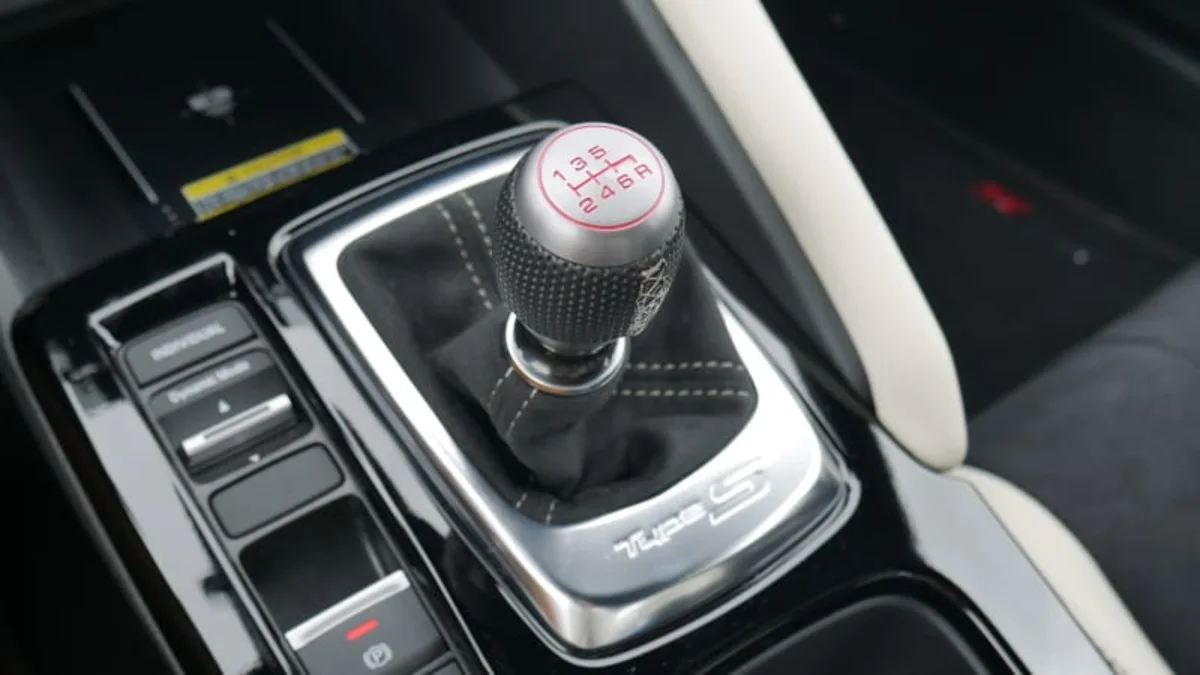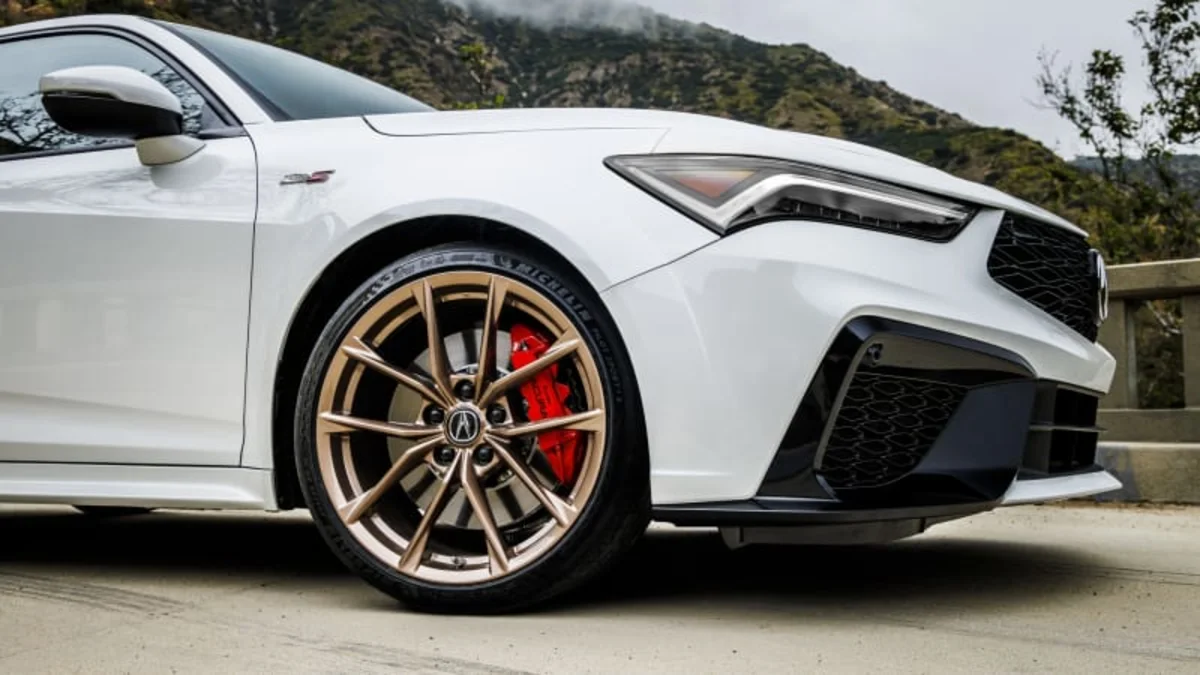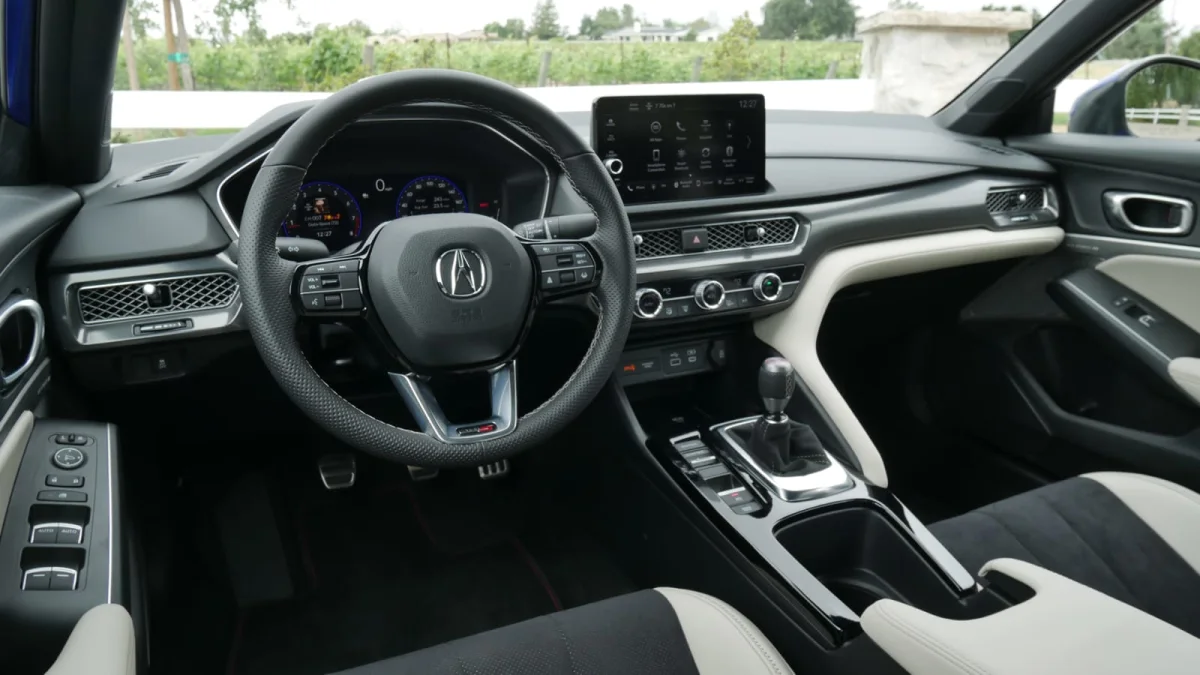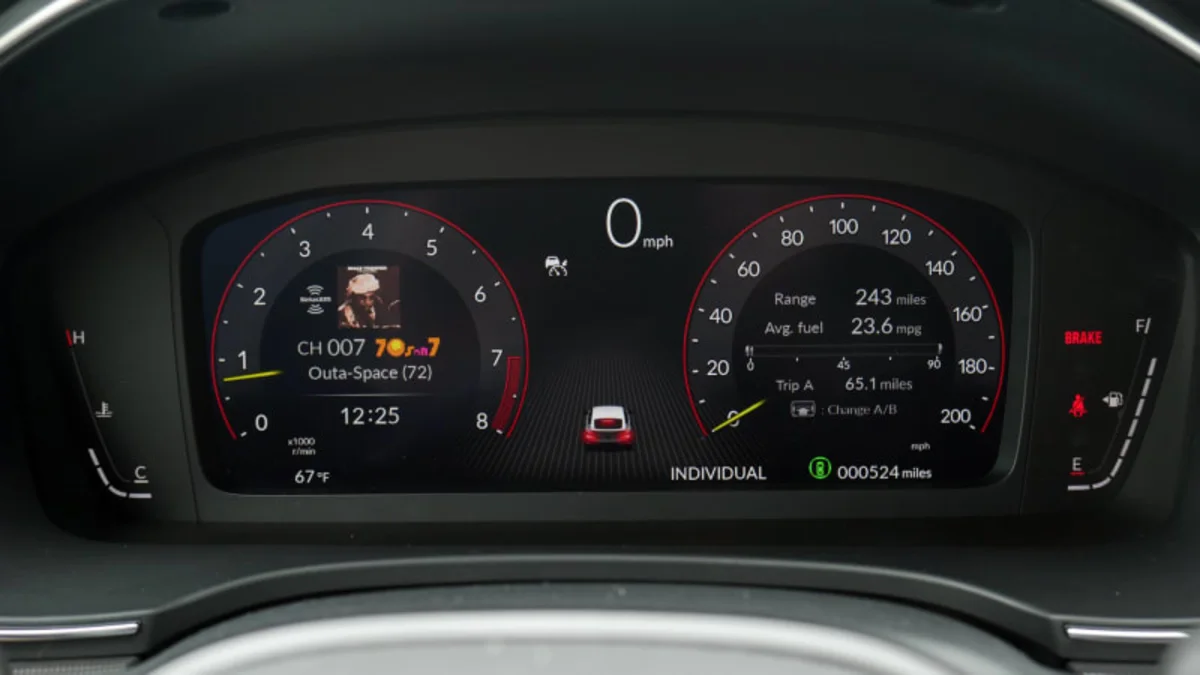2024 Acura Integra Type S First Drive Review: Have we got news for you!

If you were expecting the 2024 Acura Integra Type S to be a more comfortable, better-equipped and less-aggressive Honda Civic Type R, well, have we got news for you. As it turns out, that’s exactly what it is. You pretty much nailed it on the head.
The Integra Type S is exactly the car we all expected after looking at the specs, seeing how closely its enhanced componentry mirrored that of Honda’s halo car, and then extrapolating what a bit of polish, a bunch of equipment and slightly cushier suspension tuning might mean. If the latest Type R has been hailed for growing up in just the right ways, the Type S takes that concept further, sacrificing some go-fast potential for everyday drivability. If you like the Honda, there’s a chance you’ll like the Acura even more. There’s also a chance you’ll like it less.
Now, not surprisingly, the folks at Acura would rather shine the spotlight on how the Type S differs from the Integra A-Spec, which was previously the highest rung on the Integra ladder and the only way to get one with a six-speed manual transmission. Very well. Somehow, the visual jump between A-Spec and Type S seems much greater than Civic Si and Type R. When put side-by-side, the A-Spec Integra looks almost naked and a bit pedestrian.



The 3.5-inch-wider front track wrapped in muscular fender flares stamped directly into the sheetmetal up front is the biggest difference. The rear track is 1.9 inches wider, and although it too gets widebody fenders, they are a shmish-shmosh of plastic pieces on the door, fender and bumper. But back to the front. The face is more aggressive in appearance, but the changes are as much functional as aesthetic. The shield grille is larger and fully open (versus partially sealed) to allow 170% more air to pass through on its way up a new vent in the aluminum hood that creates downforce. The large intake-looking areas forward of the wheels don’t actually take in anything, but hidden openings on their inboard sides adjacent to the lower airdam channel air through three canards located behind those dud intakes. Air then exits behind those flared fenders, creating air curtains around the wheels. There is also a unique splitter up front, an almost-smooth floor and an enlarged diffuser, plus a lip spoiler that quite obviously won’t be creating as much downforce as the Type R’s wing. That would be performance-oriented demerit No. 1, but also, grown-up point No. 1.
The engine is the same K20C 2.0-liter turbocharged inline-four found in the Type R, though the removal of a resonance chamber in the otherwise equal triple-outlet exhaust results in an increase of 5 horsepower. Total output is 320 hp and 310 pound-feet of torque. That would also be 120 hp and 118 lb-ft more than the Integra A-Spec. Fun fact: That difference is more than the total output of the original 1986 Acura Integra.
As in the Type R, the Integra Type S engine is all about its mid-range punch. Once the revs build progressively past 3,500 rpm or so, they suddenly zing northward to the 7,000-rpm redline, and in the process, flatten you in the front seats that trade some lateral support relative the Type R for eight-way power operation, heating and a slightly higher H point for overall improved comfort. The acceleration profile of this engine really is the happy-medium/best-of-both-worlds marriage of turbocharged engines and Honda’s high-revving VTEC back catalog – because, you know, it has both a turbo and VTEC.
Controlling that engine is a CVT. Just kidding, there’s only the same six-speed manual gearbox as in the Civic Type R, or if you prefer, a gearbox that has a more rigid exterior case, higher-strength bearing system and stronger gears than the A-Spec’s. After rowing them back-to-back, the Type S manual has just a little more heft and mechanical feel to it, but remains a sterling example of why we love manuals so much. It’s just such a pleasure to use, complete with its delicate shifter ball wrapped in leather and topped with real metal. There’s also a titanium full-metal knob available for those who want to singe their entire hand on a hot day instead of just the palm. That aside (bring a glove), the Type S manual couldn’t be friendlier to use – if you’re hesitant to take the plunge because you never learned to drive a manual, fear not. It’ll be easy.


Now, there will be those who will still refuse to take that plunge, and it will undoubtedly limit the Integra Type S’ appeal relative the high-performance small luxury sedans with which it competes: Audi S3, Mercedes-AMG CLA 35 and BMW M235i Gran Coupe. The manual-equipped A-Spec has thus far represented 19% of total Integra sales, which isn’t bad for a manual take rate, but still only 19%. The Type S will therefore have a ceiling of potential customers, and according to Acura product planner Jonathon Rivers, the brand has made peace with that. An automatic option was never in the cards when he and his team made the case for an Integra Type S to the head honchos in Japan.
In terms of chassis upgrades, the Type S gets exactly the same componentry as the Type R. This includes the dual-axis front suspension to minimize torque steer, though like the Type R, it’s still mildly present when powering out of a corner. There are thicker stabilizer bars, that aforementioned wider track and three-mode adaptive dampers. Tuning differs, however, especially in regard to those dampers in order to create a less aggressive or, if you prefer, comfier driving experience. Honda chassis engineer Kohei Akamine described the Type S as having less rebound – “it sinks into the road” – as opposed to the stiffer Type R that’s more likely to jostle you about. Type S Overal Development Leader Yoshiaki Akimoto followed that up by holding out three fingers on each hand and putting them together like two interlaced Ws: Basically, each of the Type S Comfort, Sport and Sport+ modes are a little softer than their Type R counterparts.
Rest assured; this does not make the Type S a Lincoln. We’re talking subtlety here, which is good, because we’ve consistently found the Type R to be shockingly comfortable as-is. The Acura’s suspension is still on the firm side, even in Comfort, and choppier pavement still results in some bobbing about. Sport and Sport+ do noticeably have more compliance, which isn’t a bad thing in the real world where mid-corner bumps and undulations exist. In fact, I consistently set the Type R’s Individual mode to have every element in Sport+ except the suspension during our GR Corolla comparison test. By contrast, I actually drove with full Sport+ engaged in the Integra. This ultimately goes to Akimoto’s repeated stance that the Type S is intended more for street use than the “time attack circuit car” of the Type R.


So, between the softer(ish) suspension and reduced downforce, maximum road holding is indeed reduced. Again, though, we’re talking subtlety. The Integra Type S is easily the second-most rewarding and wildly capable front-driver available in this country, boasting an implacable composure and stunning amount of grip. I never heard a peep from the Michelin Pilot Sport 4S rubber and reveled in the feel of the back end smartly rotating through tighter corners while the limited-slip diff did its job in preventing understeer. Everything is just so neat and tidy, and its capabilities so great, that it actually doesn’t feel as fast as it is. The Type R is the same way, making it reminiscent of a German performance car. With its added refinement, the Type S is even more so.
More refined, maybe, but it’s also paradoxically louder. The exhaust’s eliminated resonator may free up some extra ponies, but it also adds some decibels – not necessarily for the better. There’s a fair amount of booming drone added at low rpm in the Sport and Sport+ settings (there is an active exhaust valve within the center pipe that opens and closes based on drive mode), plus some subtle pops and crackles in Sport+ (that’s the only mode, by the way, where the car subtly enhances the engine note through the speaks, though I can’t say I noticed it). In total, I could see the exhaust being annoying for some and grossly insufficient for others.



The biggest interior change relative to both the Integra A-Spec and Type R are the seats. They are basically A-Spec seats with firmer bolsters, but that means they’re also heated and eight-way power-adjustable, unlike those in the Honda. The driving position is exceptional, possibly even better than the Type R thanks to the extra adjustment range afforded by the power operation. Lateral support was also more than sufficient while driving through the mountains. To that end, the Type S front seats feature grippy black Ultrasuede inserts within a choice of black, red or white-ish simulated leather that exclusively covers the back seat. The pleather also gets added to the passenger side of the dash, though sadly, the driver-side tunnel could use it more as I found my leg resting (and banging) against hard plastic.
That would be the only complaint about the interior, and possibly the entire car, unless “the gauges could be more interesting” counts as a complaint. At the very least, Iwai made a point to say that his team tweaked those gauges’ all-digital readout to better react and align with the excellent automatic rev-match downshifting system. The “needles” are yellow, too, in homage to those found in the Japanese-market DC2 Integra Type R.
The Type S represents a single, loaded trim level, so options are exclusively of the dealer-installed variety. The heated power seats, head-up display and a 16-speaker ELS Studio 3D sound system would be the standard features not available at all on the Civic Type R. That brings us to the price tag of $51,995. Potential buyers weighing which Honda-family high-performance masterwork to buy will have to decide if all the above additions and differences are worth an extra $7,610. Frankly, that seems questionable. It’s a very different situation when comparing it to those aforementioned German luxury competitors, however, plus the similarly priced Volkswagen Golf R. The Type S is less expensive, yet is the stronger performance machine and considerably more practical thanks to its big back seat and giant, hatchbacked trunk.
Personally, I’d find a way to spring for the Acura (and skip all those Germans). The Type S looks terrific; the added comfort seems like just the right amount, and any degradation in performance is likely only to be noticed on a racetrack. So, you know, exactly what we expected.
Related video:







